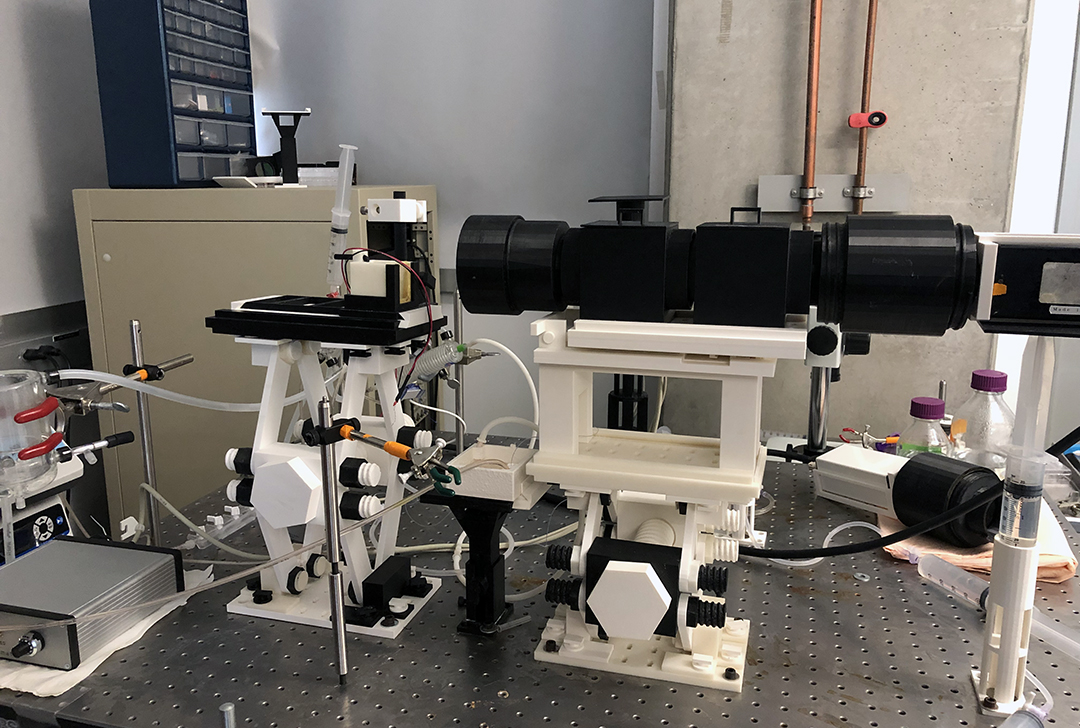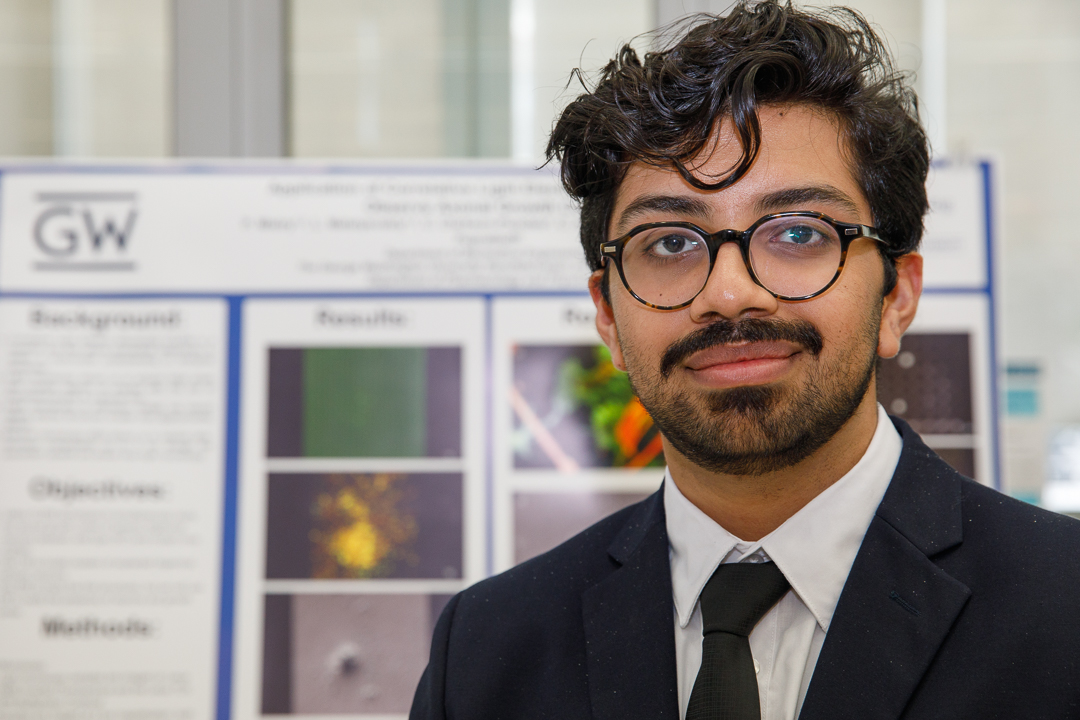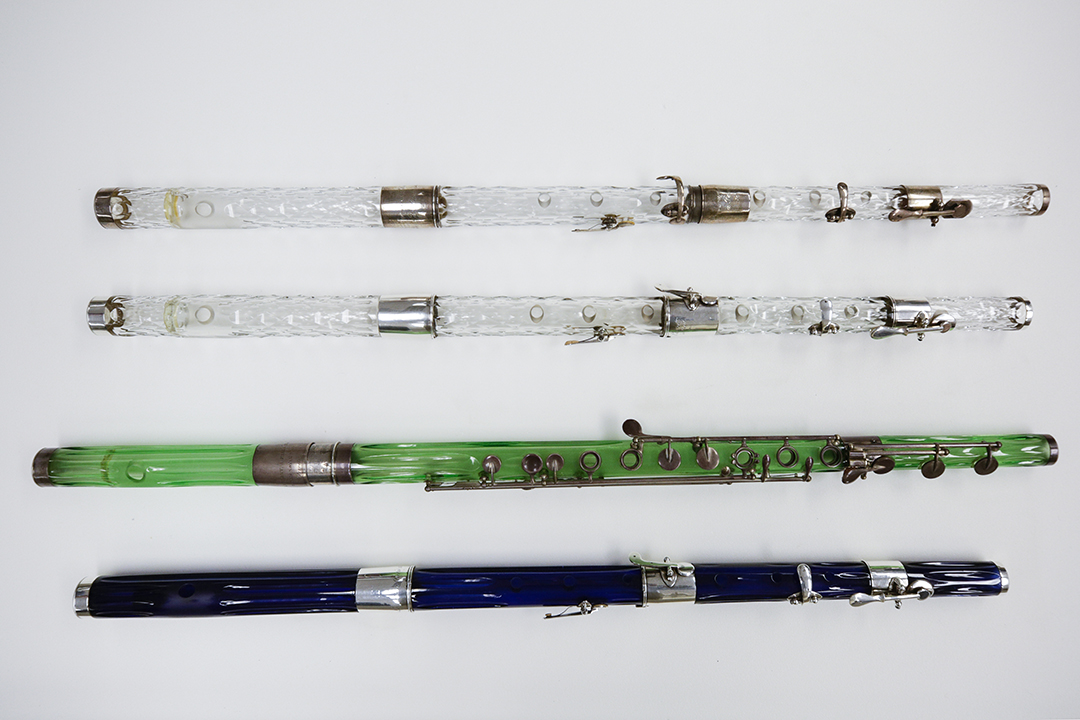By Kristen Mitchell
Two School of Engineering and Applied Science students designed a 3D-printed system for optical mapping, a leading tool in cardiac electrophysiology used to study arrhythmia mechanisms. The system can be implemented for a fraction of the cost of commercially available equipment.
Sofian Obaid, B.S. ’18, a first-year Ph.D. student, and Brianna Cathey, a senior majoring in biomedical engineering, recently published a paper on their 3D-printed system and accompanying data analysis software in Scientific Reports. Their designs can be downloaded and modified by researchers who wish to replicate the whole system or just parts of it, reducing financial and protocol feasibility barriers for cardiac electrophysiology laboratories and the broader research community.
Working under Igor Efimov, chair of biomedical engineering and the Alisann and Terry Collins Professor of Biomedical Engineering, Mr. Obaid and Ms. Cathey were initially tasked by postdoctoral scientist Sharon George, with 3D-printing a single part for an experiment. Dr. Efimov liked their idea and challenged them to design an entire optical mapping system that would increase research protocol flexibility and reduce financial barriers for research.
The ability to do 3D-printing has democratized engineering creativity in many fields, but it is especially impactful in biomedical engineering, where sophisticated engineering solutions are needed to help individual patients, Dr. Efimov said.
“Brianna and Sofian have demonstrated through their professional growth as BME undergraduates a path to future students how to be ambitious and to challenge existing methods in our field,” he said. “Working with Dr. Sharon George and other collaborators, they created a framework for custom open source 3D-printed imaging systems, one experimental study at a time. It will allow in the near future any biologists without an engineering background to design their experimental methods tailored to a biological phenomenon under investigation.”

Researchers can download specific pieces of a mapping system they want to replicate or the entire system, which supports specialized optical equipment including cameras, lenses and mirrors.
For example, one component of the traditional system is a box designed to hold a small mirror at a 45-degree angle. If a researcher needed to replace that roughly three-inch box it would cost thousands of dollars. Instead, a design for a part with the same function is available for download and can be 3D-printed for about $40.
“With little simple things like that, you would think it wouldn’t be an issue finding a cheap solution, but our experiments require specific conditions for light be collected properly and travel the right way to acquire the best data,” Ms. Cathey said. “The mechanical parts actually must meet a lot of requirements and be adaptable to special ordered high-costs optics.”
Users can now either download specific pieces of a mapping system they want to replicate or the entire system, which supports specialized optical equipment including cameras, lenses and mirrors. Researchers could save nearly $21,000 by 3D printing a new system instead of buying one currently on the market.
In addition to higher costs, commercially-bought systems are also typically tailored to a specific lens size and tissue preparation. However, the 3D-printed system gives users the ability to change these elements. This change will also help researchers save money they can instead channel toward different aspects of their work.
Ms. Cathey and Mr. Obaid worked on the project for about a year and a half before submitting their paper for publication. The system has more than 55 distinct parts and creating it was a challenge because the researchers had to think several steps ahead, considering how every design decision would impact the overall system function.
Mr. Obaid, who worked on this project as an undergraduate, said doing research drove him to continue pursuing biomedical engineering as a doctoral student. Mr. Obaid currently works under Luyao Lu in his advanced bio-integrated electronics lab.
“The best part about my experience was teaching myself new skills and applying them to improve an important research method,” he said.
Ms. Cathey, who plans to attend medical school after taking a gap year, said doing research gave her a more comprehensive understanding of the engineering principles she was studying. She spoke to Dr. Efimov about getting involved in his lab as a first-year student and has taken on more responsibility over time.
“This project been a good learning experience to see what kind of commitment it takes to make an meaningful contribution to the field,” she said.
Ms. Cathey hopes to do clinically applied engineering studies in the future. She is a co-founder of George Hacks and recently presented at the American Association for the Advancement of Science’s annual meeting about promoting social change through innovation.
To learn more about available research opportunities contact the GW Center for Undergraduate Fellowships and Research.





